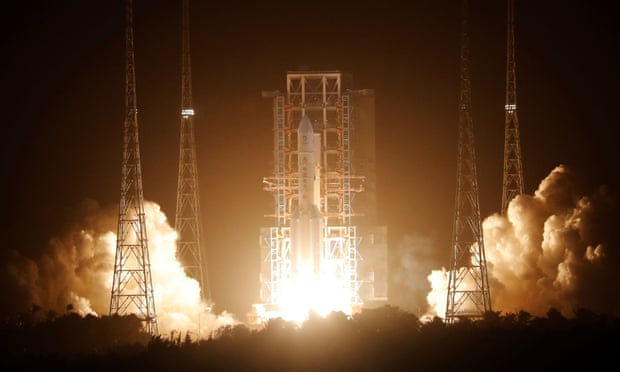China has launched a robotic spacecraft to bring back rocks from the moon – the first such attempt by any country since the 1970s.
The Long March-5, China’s largest carrier rocket, blasted off at 4.30am Beijing time on Tuesday from Wenchang space launch centre on the island of Hainan carrying the Chang’e-5 spacecraft.
The Chang’e-5 mission, named after the ancient Chinese goddess of the moon, will seek to collect lunar material to help scientists understand more about the moon’s origins and formation. The mission will test China’s ability to remotely acquire samples from space before more complex missions.
If successful, the mission would make China only the third country to have retrieved lunar samples, joining the United States and the Soviet Union.
Upon entering the moon’s orbit, the spacecraft is meant to deploy a pair of vehicles to the lunar surface: a lander and an ascender. The landing is due to take place in about eight days, according to Pei Zhaoyu, a spokesman for the mission. The probe is due to be on the lunar surface for about two days, and the entire mission is scheduled to take around 23 days.
The plan is for the lander to drill into the lunar surface and scoop out soil and rocks using a robotic arm. This material would be transferred to the ascender vehicle, which is due to carry it from the surface and then dock with an orbiting module.
The samples then would be transferred to a return capsule for the trip to Earth, with a landing in China’s Inner Mongolia region.
“The biggest challenges … are the sampling work on the lunar surface, takeoff from the lunar surface, rendezvous and docking in the lunar orbit, as well as high-speed re-entry to Earth,” said Pei, who is also director of the Lunar Exploration and Space Engineering Center at China National Space Administration.
“We can conduct sampling through circumlunar and moon-landing exploration, but it is more intuitive to obtain samples to conduct scientific research – the method is more direct,” Pei added. “Plus, there will be more instruments and more methods to study them on Earth.”



